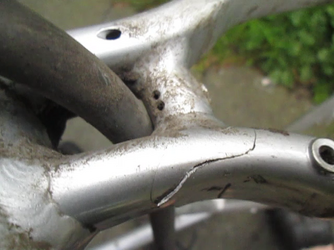PedallingNowhereSlowly
Über Member
Spend some time trying to work out whether the 2009 Specialized Sirrus Comp I picked up is worth saving, considering it needs lots of new parts.
I checked the frame alignment using the string method (run from one rear drop out, around the head tube and back to the other rear drop out).
It measures 38mm between the string and the seat tube on the drive side and 43.5mm (5.5mm difference) on the non-drive side.
I re-tied the string as tight as I could and re-checked about three times and got consistent measurements. And I then repeated the process, running the string through lugs that go through the lower part of the seat stays, eliminated the dropouts themselves.
Results consistent. The rear drop outs OLD of 135mm is spot on, so I don't know whether these frames are meant to be slightly asymetric, or whether both sets of stays are out of alignment. Does it matter if they are off by 2.75mm? Got to make the decision on whether I scrap it or fire the parts cannon and bring it back to life. Given what it needs, it's marginal. Thoughts?
I checked the frame alignment using the string method (run from one rear drop out, around the head tube and back to the other rear drop out).
It measures 38mm between the string and the seat tube on the drive side and 43.5mm (5.5mm difference) on the non-drive side.
I re-tied the string as tight as I could and re-checked about three times and got consistent measurements. And I then repeated the process, running the string through lugs that go through the lower part of the seat stays, eliminated the dropouts themselves.
Results consistent. The rear drop outs OLD of 135mm is spot on, so I don't know whether these frames are meant to be slightly asymetric, or whether both sets of stays are out of alignment. Does it matter if they are off by 2.75mm? Got to make the decision on whether I scrap it or fire the parts cannon and bring it back to life. Given what it needs, it's marginal. Thoughts?

